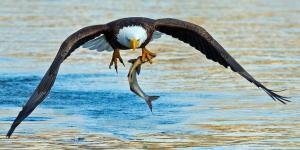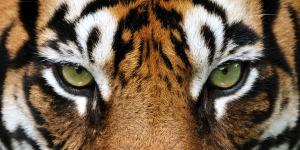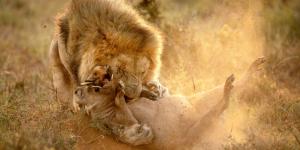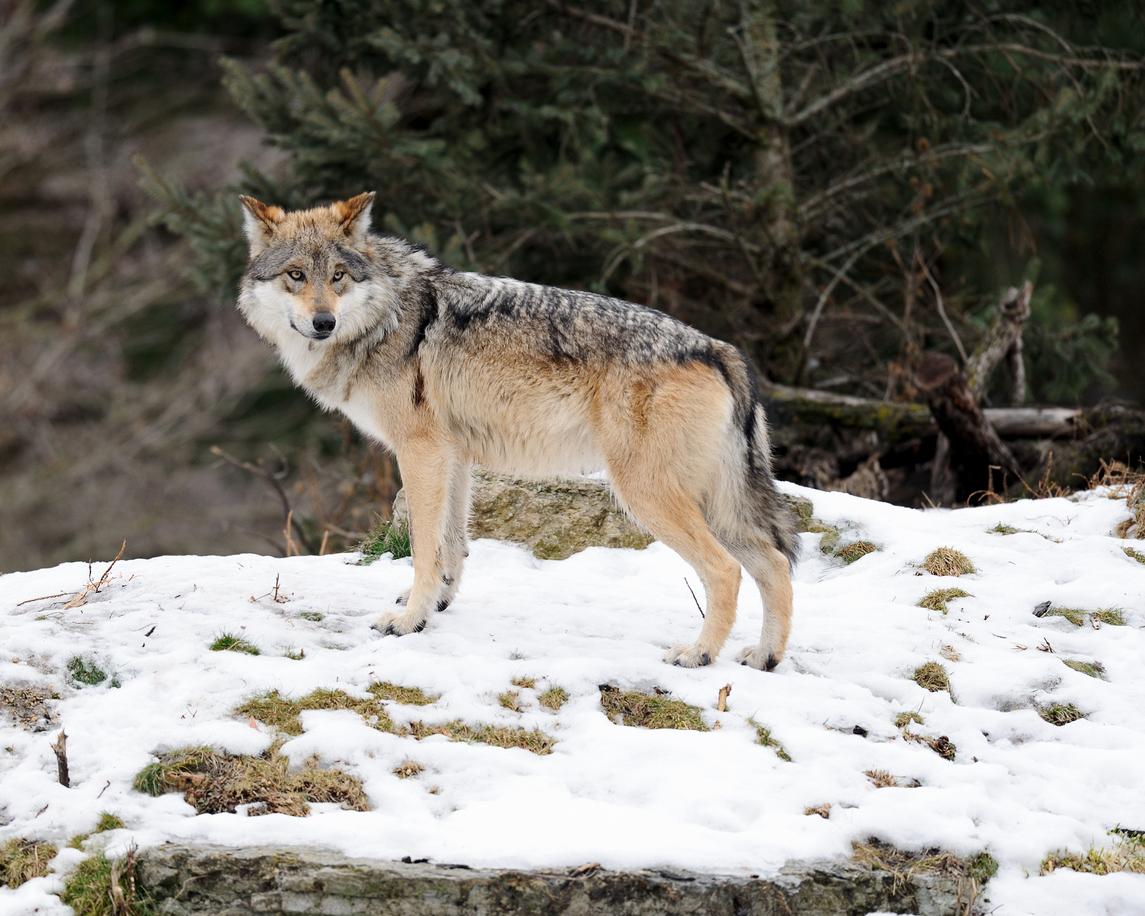How Do Wolves Hunt?


Wolves, scientifically classified as Canis lupus, are apex predators, occupying the top tier of the food chain. Their predatory skills and intricate social structures have a profound impact on not only the populations of their prey, but also the very landscapes they inhabit. Their hunting activities also influence the behavior and distribution of prey species, shaping the dynamics of the entire ecological community.
In the upcoming AnimalWised article, we delve into the intricacies of wolf hunting, exploring the impact of hierarchy on their hunting strategies, and detailing the various methods employed during their pursuit of prey.
Wolf hierarchy
Understanding the social hierarchy of wolves is crucial to appreciating their hunting methods. In fact, a well-defined hierarchy governs the behavior of wolf packs, ensuring their survival and success. This hierarchy, founded on strength, experience, and temperament, forms the foundation of their social organization.
At the pinnacle of the wolf pack hierarchy stands the alpha pair, a breeding couple who command respect and authority. The alpha male, typically the largest and most assertive individual, establishes dominance through displays of strength and leadership. The alpha female, often the most experienced and nurturing individual, oversees the pack's reproductive cycle and pup care.
Beneath the alpha pair reside the beta wolves, loyal lieutenants who serve as deputies and mediators. These individuals, typically the offspring of the alpha pair, provide stability and support to the pack, ensuring smooth operation and cohesion. Betas often play crucial roles in hunting and territorial defense, acting as intermediaries between the alpha pair and other pack members.
At the lower end of the hierarchy lie the omega wolves, the most submissive individuals who play a vital yet often overlooked role in pack dynamics. Omegas serve as scapegoats, absorbing aggression and tension within the pack, maintaining order and preventing conflicts. They also act as babysitters and playmates for pups, contributing to their socialization and development.
Journey through the realm of wolf evolution and uncover the intriguing variations and characteristics that distinguish different wolf subspecies.

Do wolves hunt in groups?
Yes, wolves hunt in groups. When the call of hunger arises, the wolf pack transforms into a synchronized hunting machine, each individual playing a specific role in the pursuit of prey. The alpha pair leads the charge, using their experience and knowledge to track and locate prey. Beta wolves assist in herding and chasing, while omega wolves may serve as distractions or decoys.
Wolves maintain cohesion and coordinate their actions through a sophisticated system of communication. Vocalizations, including growls, howls, and whines, convey information about prey location, danger, and social status. Body language, such as ear position, tail posture, and facial expressions, also plays a vital role in communication. Scent marking, achieved by depositing urine or rubbing against objects, serves as a visual and olfactory communication tool, marking territories and reinforcing social bonds.
In a wolf pack, each wolf plays a specific role in the hunting process, contributing to the group's overall success. The hierarchical structure of the pack ensures that each individual understands its responsibilities and works cohesively to achieve a common goal.
- Alpha male: the alpha male leads the hunt, using his experience and knowledge of the territory to track and locate prey. He also plays a crucial role in coordinating the pack's attack strategy and ensuring that all members are working together effectively.
- Alpha female: the alpha female often plays a more supportive role during hunts, staying close to the pups and ensuring their safety. She may also assist in herding prey and signaling the pack to attack.
- Beta wolves: beta wolves act as intermediaries between the alpha pair and the rest of the pack, relaying instructions and ensuring that everyone is following the plan. They also play a significant role in herding and chasing prey, helping to tire out and corner the target.
- Omega wolves: omega wolves often serve as distractions or decoys during hunts, drawing the attention of prey away from the main attack force. They may also assist in flushing out prey from hiding places. Additionally, omega wolves play a vital role in maintaining pack morale and reducing tension within the group.
Do wolves hunt during the day or night?
Wolves hunt at both day and night due to their keen sense of smell and sight. They primarily hunt during twilight hours, utilizing their excellent low-light vision aided by the tapetum lucidum behind their retinas. During the day, wolves rest in secure locations, avoiding potential threats. In winter, their activity may vary, with movement occurring at any time to adapt to seasonal conditions.

Hunting methods and strategies of wolves
Wolves employ a variety of hunting strategies that reflect their intelligence, teamwork, and adaptability. These strategies are honed to maximize efficiency and increase the likelihood of a successful kill. Here are some key wolf hunting strategies:
- Wolves are built for endurance rather than speed. They can cover long distances during a chase, gradually wearing down their prey until it becomes vulnerable to an attack. This strategy is particularly effective against ungulates like deer and elk, where the pack can maintain pursuit until the prey is exhausted.
- Wolves are skilled at using terrain and cover to their advantage. They may ambush prey by hiding in vegetation or taking advantage of natural features to get close before launching a coordinated attack. This strategy is often employed when hunting smaller prey or when the element of surprise is crucial.
- Wolves exhibit a keen understanding of their environment and the behaviors of different prey species. They often select targets based on factors like age, health, or vulnerability, ensuring a more successful hunt. This strategy helps conserve energy and reduces the risk of injury during the pursuit.
- When hunting in open areas, wolves may work together to herd a group of prey animals. By isolating an individual from the herd, they increase the chances of a successful takedown. Herding and isolating prey require effective communication and coordination within the pack.
- Wolves adapt their hunting strategies based on the behavior of different prey species. For example, they may adjust their tactics when hunting large ungulates compared to smaller mammals or birds. This adaptability showcases the intelligence of wolves in understanding the nuances of different prey behaviors.
- Wolves use natural features of the landscape, such as rivers, cliffs, or other obstacles, to their advantage. These features can be used to corral or trap prey, making the hunt more effective.
Want to learn more about the fascinating world of canines? Delve into our article on the differences between coyotes and wolves, and discover the unique characteristics that set these two species apart.
What do wolves hunt?
Wolves are opportunistic predators, meaning they hunt a variety of prey depending on their availability and location. Their primary prey consists of large ungulates, such as deer, elk, moose, bison, and caribou.
They may also prey on smaller animals, such as rabbits, hares, and rodents. These smaller prey sources can provide a valuable food source for wolves, especially during periods when larger prey is scarce.
Wolves may also scavenge on carcasses left by other predators, such as bears or cougars, to supplement their diet. The specific prey species hunted by a wolf pack can vary depending on the abundance and distribution of different animals in their range.
The diversity of prey species hunted by wolves highlights their adaptability and ability to exploit various food sources. Their hunting strategies and pack dynamics are well-suited for taking down large ungulates, but they can also scavenge and prey on smaller animals when necessary.
Curious about the potential for wolf-human interactions? Delve into our article exploring the rarity and contributing factors of wolf attacks on humans.
If you want to read similar articles to How Do Wolves Hunt?, we recommend you visit our Facts about the animal kingdom category.
- MacNulty, D.R., Tallian, A., Stahler, D.R., & Smith, D.W. (2014). Influence of group size on the success of wolves hunting bison . PloS one, 9(11), e112884.
- Milanesi, P., Meriggi, A., & Merli, E. (2012). Selection of wild ungulates by wolves Canis lupus (L. 1758) in an area of the Northern Apennines (North Italy) . Ethology Ecology & Evolution, 24(1), 81-96.
- Muro, C., Escobedo, R., Spector, L. and Coppinger, RP. (2011). The hunting strategies of the wolf pack (Canis lupus) emerge from simple rules in computer simulations . Behavioral Processes, 88 (3), 192-197.
- Sand, H., Wikenros, C., Wabakken, P., & Liberg, O. (2006). Effects of hunting group size, snow depth and age on the success of wolves hunting moose . Animal behavior, 72(4), 781-789.
- Stahler, D.R., Smith, D.W., & Guernsey, D.S. (2006). Foraging and feeding ecology of the gray wolf (Canis lupus): lessons from Yellowstone National Park, Wyoming, USA . The Journal of nutrition, 136(7), 1923S-1926S.







